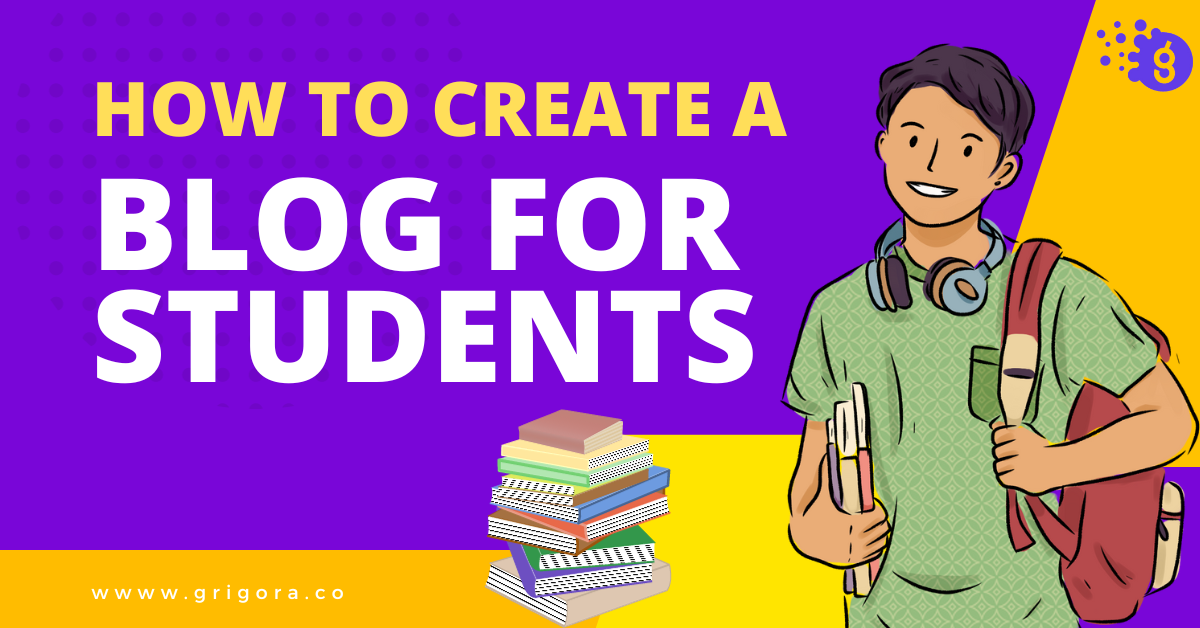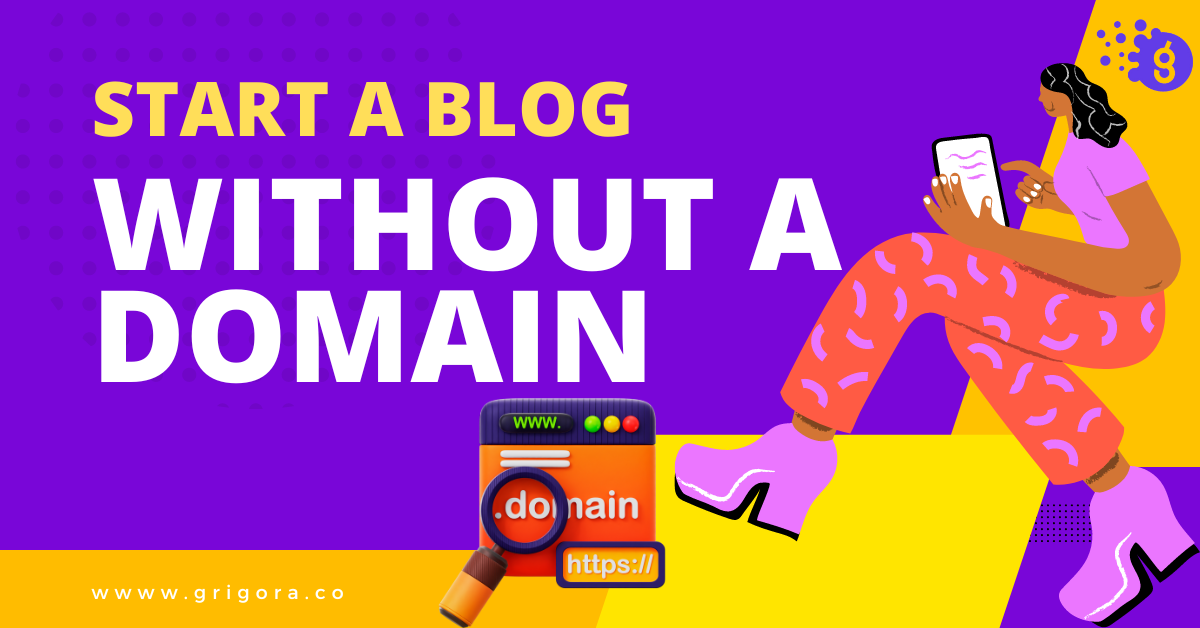Introduction
In the vibrant world of digital expression, a blog is an invaluable tool for students' growth and development. It serves not just as a platform for expression but as a canvas for learning and interaction. Blogging is a dynamic way to enhance writing skills, encourage critical analysis, and foster creativity.
Blogs in education offer students a platform to showcase their work to the world and take ownership of their learning.
In this article, we'll navigate through the key steps in creating a blog tailored for students, ensuring it's a constructive and secure space that enriches their educational journey.
Let's dive into the essential steps to craft a blog that resonates with the student community and supports their academic and personal growth.
| Step Number | Action Step | Description |
|---|---|---|
| 1 | Identify Goals and Audience | Determine the blog's purpose and who will be reading it. |
| 2 | Select a Blogging Platform | Choose a user-friendly platform that suits student needs. |
| 3 | Design the Blog | Customize the layout and theme to make it visually appealing. |
| 4 | Plan Content Strategy | Develop a calendar and brainstorm relevant topics. |
| 5 | Create Engaging Content | Write and prepare posts that are informative and engaging. |
| 6 | Incorporate Educational Tools | Use interactive features to enhance the learning experience. |
| 7 | Encourage Collaboration | Promote group work and contributions from various students. |
| 8 | Engage with Readers | Build a community by encouraging comments and discussions. |
| 9 | Promote the Blog | Use social media and campus events to spread the word. |
Defining the Goals and Audience
Understanding the Blog's Purpose
Clarifying the blog's mission is the cornerstone of your strategy. A student blog might aim to share educational insights, serve as a collective diary for a student group, or even act as a discussion board for academic topics. Each goal demands a tailored approach to content and design.
Identifying the Target Audience
Knowing who will read the blog helps in crafting content that speaks directly to their interests. Is the audience local to a school, or broader, encompassing students from various backgrounds? This knowledge informs not only the tone and style of the blog but also its functionality and accessibility.
Setting Achievable Objectives
Outline what the blog aims to achieve within a set timeframe. Objectives could range from educational impact to community engagement. Setting SMART (Specific, Measurable, Achievable, Relevant, Time-bound) goals can lead to a focused and purpose-driven blog.
Engaging the Right Readers
It's not enough to simply identify the audience; you must also consider how to engage them. This involves deciding on the language, themes, and content types that will most effectively resonate with and retain your readership.
Choosing a Blogging Platform
For student bloggers, the choice of platform is a balance between functionality, ease of use, and cost.
User-Friendly Interface
The platform should offer an intuitive interface that accommodates students' varying technical skills. Consider platforms like Grigora, known for a straightforward dashboard that simplifies content creation and management.
Cost Considerations
While Grigora doesn’t offer a permanent free tier, it does provide a 14-day trial allowing students to explore its features fully. After the trial, the platform's pricing plans are designed to be budget-friendly, which is a critical factor for students and educational institutions.
Educational Tools Integration
Platforms that provide educational tools are a plus. Grigora's suite may include features that support academic blogging, such as content organization and collaboration options, making it a suitable choice for student bloggers focused on educational content.
Selecting the right platform means finding one that aligns with the educational and financial needs of student bloggers, paving the way for a successful blogging experience.
Designing the Blog
For students, the design of the blog should be engaging yet functional, allowing for easy navigation and reflecting the educational content.
Selecting Themes and Layouts
Choose a theme that resonates with the student body; it should be modern and responsive. Grigora offers a variety of themes that can be customized to fit the blog's purpose, whether it’s for a school project or a student club.
Personalizing the User Experience
Personalization is key. Customize the blog’s layout to ensure that it facilitates student interaction and learning. With Grigora’s customization options, students can create a unique look and feel for their blog that stands out and appeals to their peers.
Content Planning
Creating a content plan is a strategic step that ensures the blog remains focused and relevant to its student audience.
Developing a Content Calendar
Organizing a content calendar helps maintain a steady flow of posts and covers a variety of topics that engage students. Planning ahead for holidays, school events, and thematic educational series can keep content timely and interesting.
Brainstorming Relevant Topics
Engage students in brainstorming sessions to generate a list of topics that reflect their interests and curricular goals. This collaborative approach not only diversifies the content but also gives students a sense of ownership over the blog.
Writing and Creating Content
Content is the heart of any blog, and for a student blog, it needs to be both informative and relatable.
Writing Engaging Posts
Encourage students to write posts that are engaging and thought-provoking, blending personal insights with educational content. This not only makes the blog more interesting but also enhances the learning experience.
Incorporating Multimedia
Utilizing various forms of media—such as images, videos, and infographics—can make posts more engaging and accessible to different learning styles.
Incorporating Educational Tools
To enhance the educational value of your blog, it's vital to incorporate tools and resources that support learning.
Using Interactive Features
Features such as quizzes, polls, and interactive discussions can encourage active participation and make learning more dynamic.
Embedding Educational Resources
Including links to external educational resources or embedding educational content can provide additional learning opportunities for students.
Incorporating these tools can transform a blog from a mere information repository to an interactive learning environment. Next, we'll discuss the importance of collaboration and contribution in a student blog.
Maintaining Privacy and Safety
In the context of a student blog, upholding privacy and ensuring a safe online environment is paramount.
Implementing Privacy Measures
Take steps to protect personal information and educate student contributors on best practices for online privacy.
Adhering to Safety Guidelines
Establish clear guidelines for content and interactions to maintain a respectful and secure platform for all users.
It's crucial to create a space where students feel safe to express themselves and engage with others. Next, we will consider how the blog aligns with educational standards and practices.
Educational Compliance
Ensuring that your student blog adheres to educational standards is crucial for its integration into the learning environment.
Aligning with Curricular Standards
Ensure that content on the blog is in line with curricular goals and educational benchmarks.
Facilitating Academic Integrity
Promote and enforce academic integrity, providing guidance on proper citations and original work to prevent plagiarism.
By aligning with educational standards, the blog not only becomes a tool for learning but also upholds the values of the academic community. Next, we’ll address the importance of making your blog accessible to all students.
Accessibility for All Students
Accessibility should be a cornerstone of any educational blog, ensuring all students can engage with the content.
Ensuring Web Accessibility
Adopt web accessibility best practices, like alt text for images and proper heading structures, to accommodate students with disabilities.
Testing for Accessibility
Use tools to test the blog’s accessibility and make necessary adjustments to improve user experience for all students, regardless of ability.
An accessible blog is inclusive and reflects a commitment to providing equal opportunities for learning and expression. With accessibility in place, the blog becomes a resource for every student. Next, we will discuss strategies for sustaining the blog long-term.
Sustaining the Blog Long-Term
For a student blog to remain dynamic and relevant, it must evolve alongside its contributors and audience.
Planning for Future Content
Keep the blog fresh with a long-term content strategy that anticipates changes in the student body and educational trends.
Managing Transitions
As students graduate, plan for transitions by recruiting new contributors and updating roles to ensure the blog's continuity.
A sustainable approach guarantees that the student blog remains a lasting platform for education, collaboration, and community. Now let's wrap up with a conclusion that encapsulates the essence and journey of creating a successful student blog.
How frequently should content be updated on a student blog?
Content should be updated regularly to keep the blog dynamic and engaging. Depending on the team's capacity, this could range from weekly to bi-monthly. Consistency is key to building a loyal readership.What measures can ensure the content remains student-friendly and educational?
Establish content guidelines that prioritize clarity, relevance, and appropriateness. Encourage contributions that are informative and reflective of the student experience. Regular reviews by educators or peer moderators can help maintain quality and educational value.In what ways can blogging be used to complement students' in-class learning?
Blogging can extend classroom discussions, allow for deep dives into subjects of interest, and encourage students to explore topics creatively. It can also be a platform for peer-to-peer teaching and showcasing student projects.
Conclusion
In crafting a student blog, we weave together technology, creativity, and education, creating a tapestry that reflects the diverse voices and experiences of the student body. From the first step of defining the blog's mission to the ongoing process of engagement and feedback, each phase is integral to the blog's success. This journey does not end with the launch; it evolves with each post, each shared story, and each new contributor. The student blog stands as a living document of the learning, growth, and community it fosters.
By following these guidelines, students and educators alike can create a blog that not only serves as a platform for expression but also as a valuable educational tool. The blog then becomes more than just a collection of posts; it becomes a shared journey of discovery and development.



